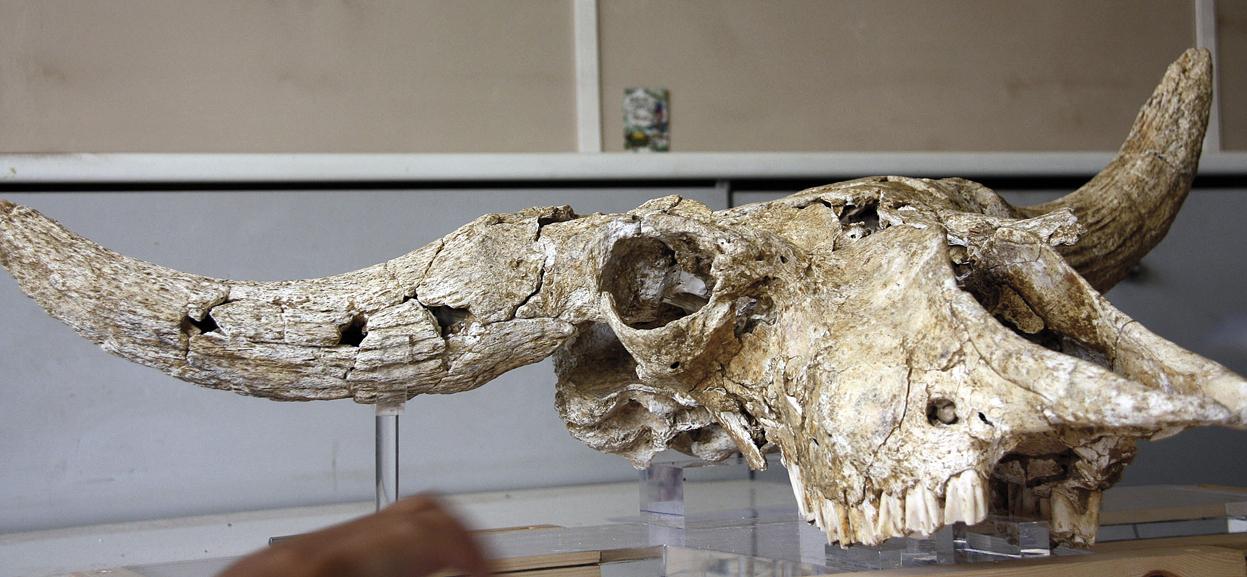Present almost the entire bison skull discovered in Mutriku
2011/11/01 Elhuyar Zientzia Iturria: Elhuyar aldizkaria

Almost the entire skull of a 18.000-19,000 year old bison has been discovered at the site of Kiputz IX, in the municipality of Mutriku. In 2002 the members of the Munibe Group of Azkoitia discovered the skull and the excavation took place between 2004 and 2007, under the direction of Aranzadi Zientzia Ekartea and the Department of Stratigraphy and Paleontology of the University of the Basque Country. From now on it will be deposited in the Deposit of Archaeological and Paleontological Materials of the Basque Government in Intxaurrondo.
The cave of Kiputz IX is vertical and was a trap for the animals that inhabited the area. It is a paleontological site of great importance today, with a rich sample of deer (48 animals) and, above all, one of the largest groups of reindeer (23 animals) and bison (18 animals) throughout the Iberian peninsula. "Undoubtedly, the most significant of all the pieces is the skull of the steppe bison (Bison priscus), which has been preserved almost entirely, since it is the only one that has been preserved in this way throughout the peninsula, and one of the few in Western Europe," says Aranzadi Science Society researcher Pedro Castaños. It is a male bison, with a feature film between the two ends. This animal was neither hunted nor eaten, simply fell into the cave and died of hunger.
Probably this kind of bison was the ancestor of the current European bison. Both are not the same species: it was bigger than the current one, "and the great variety it had is especially striking. The current bison are not so confused," said Castaños.
They lived with humans and in the Palaeolithic were systematically hunted by groups of hunters. He was also one of the protagonists of rock art. Well, "the traces of onions are a real proof of the presence of these animals," said Xabier Murelaga.




